Have you noticed that your Instagram content is getting less reach and engagement lately? Wondering if you've been “shadowbanned”?
In this article, you'll learn everything you need to know about an Instagram shadowban, including whether it's real, what causes it, and how to avoid getting your account restricted.

What Is Shadowbanning?
A shadowban refers to when a social media platform deprioritizes an account. That may mean the account becomes harder to find in search. It may also mean that the account's content no longer appears as frequently in followers' feeds. In most cases, having your account or content restricted causes a decline in engagement and reach.
If you experience this phenomenon, you might feel like your account and content are disappearing from the social media platform. In other words, it might seem like you're being banned without an official notice, which explains the “shadowbanning” label.
Sometimes these negative effects can happen suddenly, seemingly out of nowhere. But as I'll explain, you can typically get to the bottom of the issue, address the problems, and minimize the impact.
Instagram Shadowbans Aren't Real
For years, shadowbanning has been such a common topic of discussion that many marketers accept it as reality. If your metrics tank, it's easy to dismiss the situation as a shadowban.
However, the official line from Instagram is that shadowbanning isn't real. In a 2020 Q&A, Head of Instagram Adam Mosseri clarified, “Shadowbanning is not a thing.”
He went on to explain that as you gain an audience on Instagram, your content may appear in the feed as long as your followers continue to use their accounts. In addition, Mosseri stated that Explore placements aren't guaranteed for anyone.
What's Really Happening
Mosseri closed out by saying, “Sometimes you get lucky; sometimes you won't.” Luck may help make your content more engaging and discoverable but bad luck certainly isn't the only reason some content isn't successful.
If you've been recycling the same Instagram marketing strategy for a long time, your approach may not align with what's best now. That may cause the algorithm to deprioritize your content. It's a good idea to get up to date on current best practices and incorporate some new tactics into your strategy.
In other cases, Instagram may have placed a very real restriction on your account or content due to the nature of your posts. In many cases, you can figure out why the platform is limiting distribution of your content and take steps to reduce the effects.
Ultimately, it appears as though the shadowban discussion is more of a question of terminology. Instagram may not want to use the “shadowban” label but the platform does place limitations on accounts and content based on a long list of factors. Whether you want to call it a shadowban or a restriction, it's helpful to take a proactive approach to resolving it, rather than dismissing it as a mysterious outcome you can't control.
What Causes “Shadowbanning” and How to Fix It
Do you suspect that Instagram is restricting your company's account? Here are some of the most common algorithm and content issues that lead to “shadowbanning,” along with tips for getting your metrics back on track.
Using Banned Hashtags
Instagram is upfront about the fact that the platform does have banned hashtags. In general, they're keywords linked with content that goes against Instagram guidelines. To limit discoverability, Instagram removes the hashtag search pages and may restrict content that features these keywords.
Get World-Class Marketing Training — All Year Long!
Are you facing doubt, uncertainty, or overwhelm? The Social Media Marketing Society can help.
Each month, you’ll receive training from trusted marketing experts, covering everything from AI to organic social marketing. When you join, you’ll also get immediate access to:
- A library of 100+ marketing trainings
- A community of like-minded marketers
- Monthly online community meetups
- Relevant news and trends updates
What to Do Instead
Just because Instagram bans a hashtag doesn't mean you can't use it. In fact, you could be adding banned hashtags to your posts without knowing it. You could be signaling to Instagram that you're posting content that doesn't align with the platform's guidelines.
To avoid using banned hashtags, check the ones you plan to use before publishing. Ideally, you should see a hashtag page that looks similar to the one below for #ramen. A normal page should show Top, Recent, and Reels tabs displaying content that features the hashtag. You should also see a blue Follow button that allows you to add hashtagged content to your feed.

If you search for a banned hashtag, you'll see a page similar to the one below for #tag4like. The page is blank, without any content or follow button, which signals that the hashtag is banned. Before publishing content, remove any hashtags with pages like the one below.
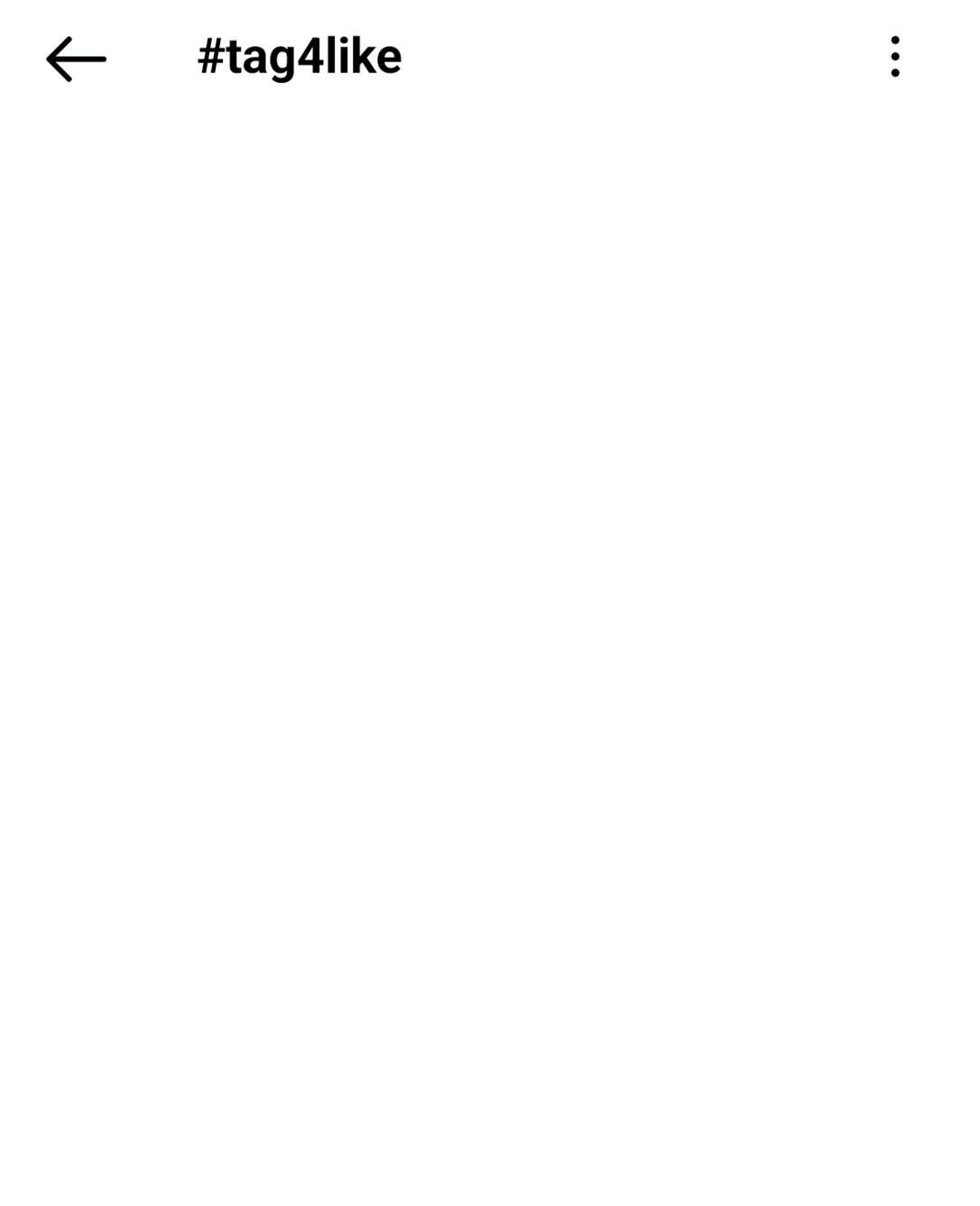
Keep in mind that Instagram periodically updates its lists so it's a good idea to keep checking your hashtags regularly. Viewing your Instagram Insights can also help you spot banned hashtags. If a post's hashtag-related reach shows a significant decrease from your baseline, check the hashtags to confirm whether one or more has been banned.
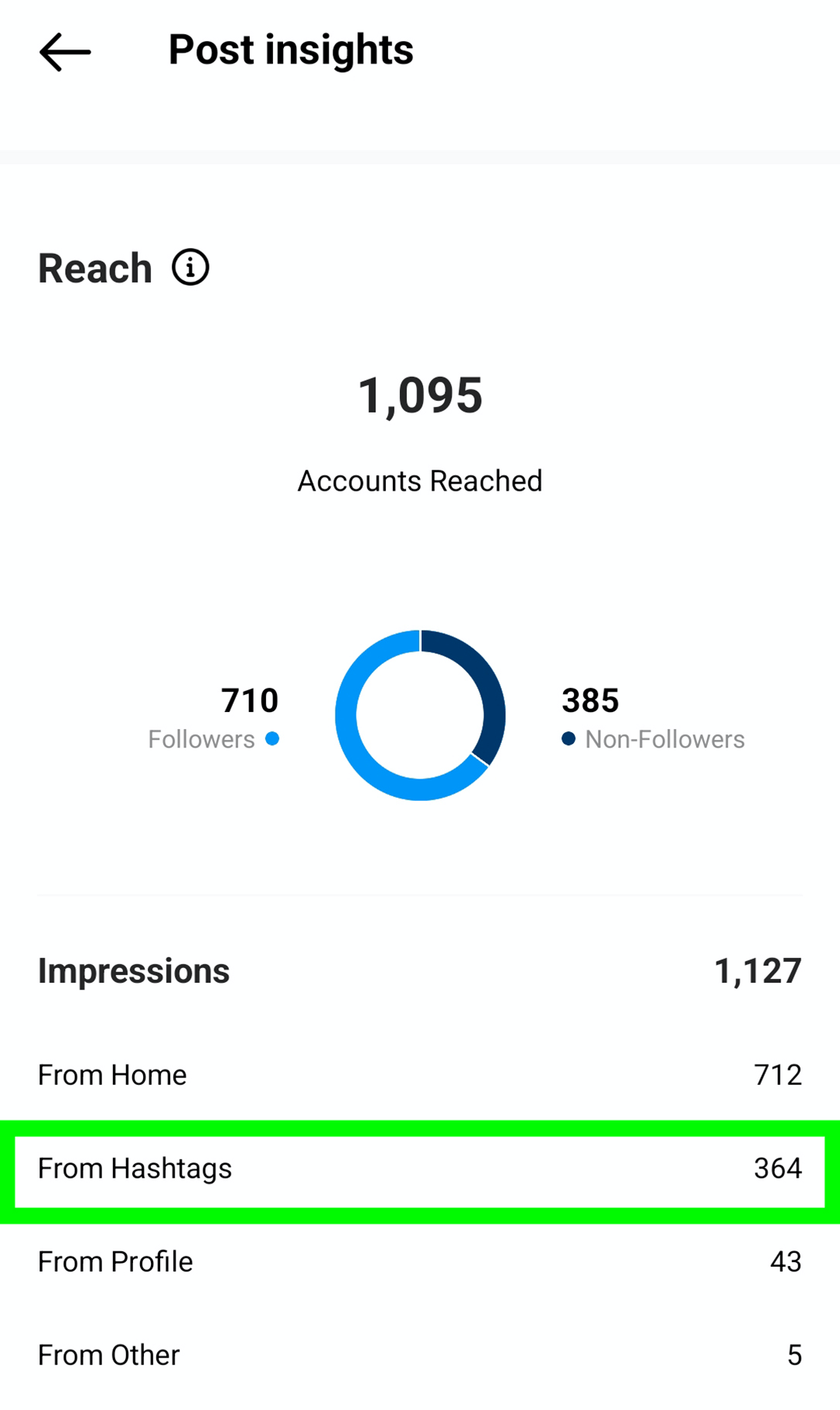
Reusing Hashtag Lists
Finding the right hashtags for your content can be time-consuming and labor-intensive. To save resources, you might be tempted to reuse the same hashtags on every post. If your business typically creates content on a handful of similar topics, this workflow might seem reasonable.
However, Instagram guidelines prohibit repetitive content, which applies to hashtag groups, too. That doesn't mean you can't reuse a branded hashtag regularly or add a campaign hashtag to relevant posts. But it does mean you shouldn't include the same list of 30 hashtags every time you post to Instagram.
What to Do Instead
First, open Meta Business Suite and save the hashtags you typically use on Instagram. Every time you research Instagram hashtags, add new keywords to your approved list. (Note that the Instagram app doesn't have saved hashtags.)
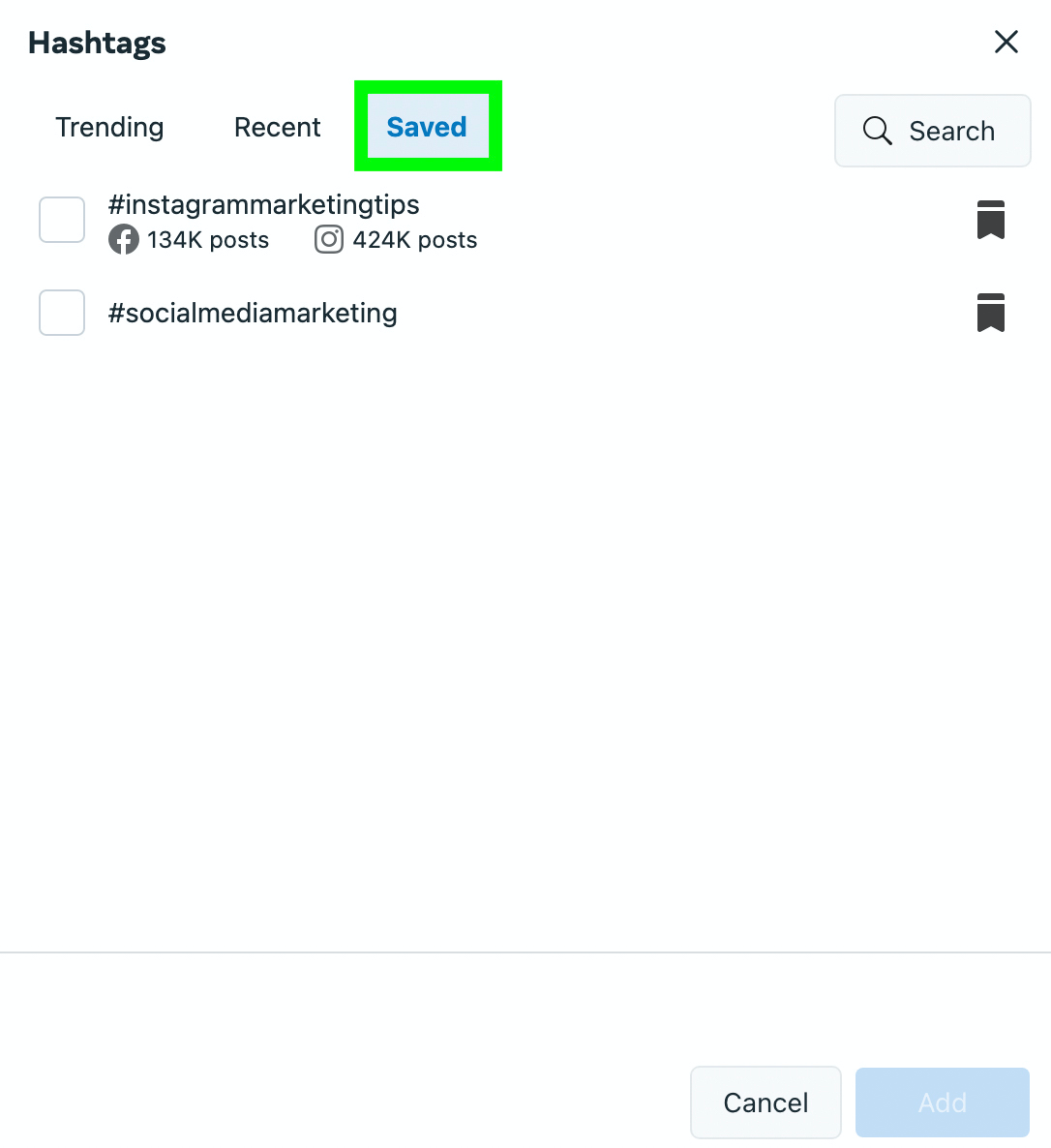
When you go to schedule an Instagram post in Business Suite, click the hashtag symbol and select the Recent tab. There, you can see the hashtags you've used recently. Every time you schedule new content, aim to mix in some of the approved hashtags from your Saved tab and avoid repeating recently used hashtags too often. Take care to change up the order to avoid repeating the same sequences.

Repeating the Same Comments
When your content generates engagement, it's important to respond to comments and answer questions. Your responses can create comment threads and help you turn Instagram followers into customers.
If you need to reply to a lot of generic comments, you might be tempted to copy and paste the same comment over and over. Yet it's important to note that Instagram Community Guidelines prohibit repetitive comments. Copying and pasting identical responses may appear spammy to Instagram, which can cause the platform to restrict your account.
What to Do Instead
It's always best to write custom replies to comments. That way, you can make sure your responses are both unique and relevant to the original comment.
If writing completely original responses every time isn't realistic, use Meta's Saved Reply feature. (Note that the Instagram app offers saved replies for DMs only.) In Business Suite, go to your Instagram comments inbox. Click on the message icon in the lower-right corner to open the Saved Reply tool.

Discover Proven Marketing Strategies and Tips
Want to go even deeper with your marketing? Check out the Social Media Marketing Podcast! Publishing weekly since 2012, the Social Media Marketing Podcast helps you navigate the constantly changing marketing jungle, with expert interviews from marketing pros.
But don’t let the name fool you. This show is about a lot more than just social media marketing. With over 600 episodes and millions of downloads each year, this show has been a trusted source for marketers for well over a decade.
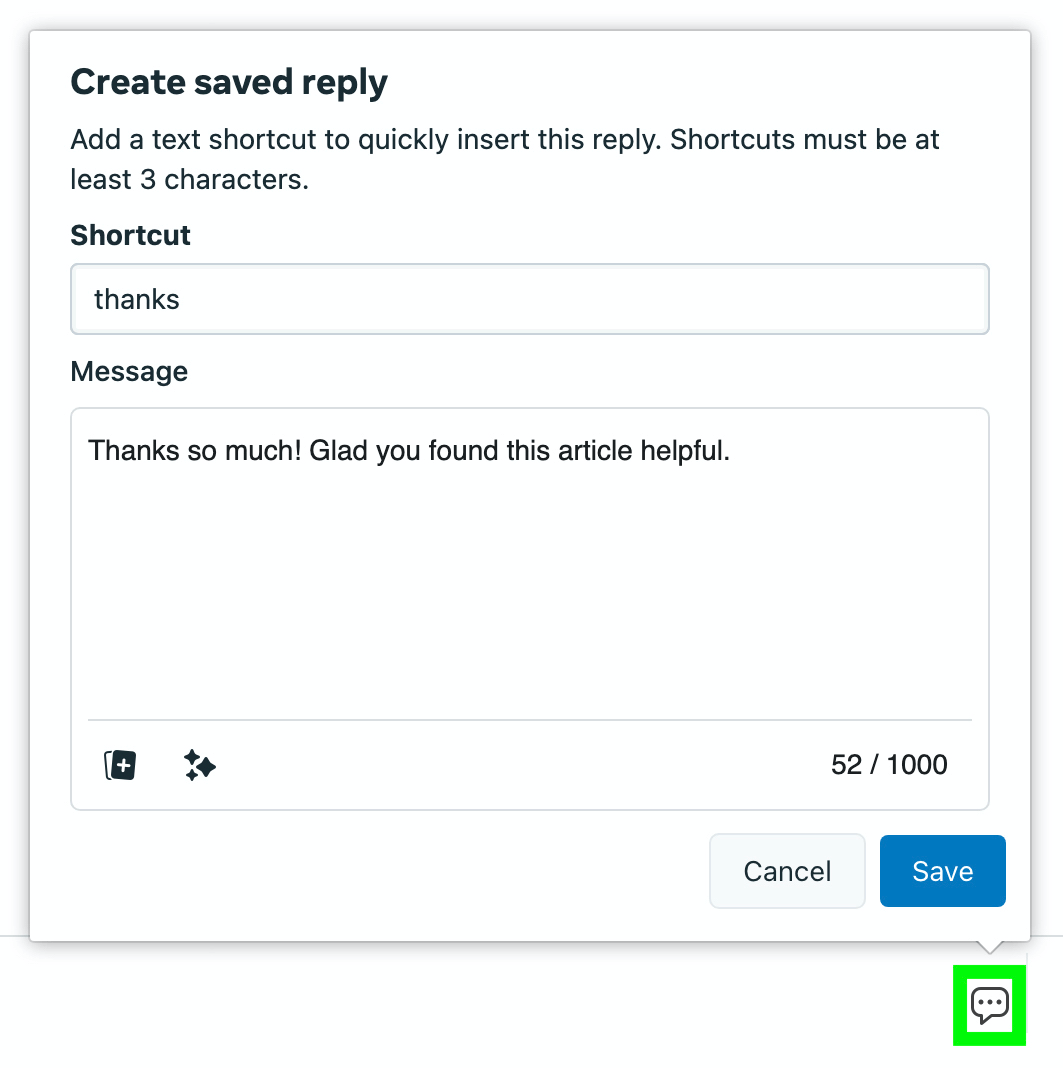
Enter a keyword or phrase you want to associate with the reply and then write the full response. When you reply to an Instagram comment, you can click the message icon to bring up your saved replies and select one to reuse. But here's the catch: don't send just the saved reply. Add a personal note to customize your response and avoid appearing spammy.
Publishing Inappropriate Content
Instagram Community Guidelines clearly detail the types of content that aren't allowed on the platform. But what if your business posts about topics that fall into a gray area? For example, you may create content that doesn't go against the guidelines, yet it may not be appropriate for select audiences.
If you post content that's inappropriate for some users, you can expect Instagram to limit distribution. This approach is part of the Remove, Reduce, Inform process that the platform detailed in 2019.
What to Do Instead
When you publish content that Instagram considers unsafe for some audiences, it probably won't appear on Explore or hashtag pages. If you depend on this kind of distribution to increase reach and engagement, then make sure your content isn't inappropriate.
But if inappropriate content is part of your brand, then focus on growing your audience instead. As long as it doesn't violate Instagram guidelines, your content should still appear in your followers' feeds, especially if they engage with your content.
Reposting Other Accounts' Content
Whether you partner with another brand or you work with an influencer, you may want to share content from other accounts. After all, resharing user-generated content has long been a helpful tactic for brands to grow audiences while building relationships with influential figures.
Instagram has always discouraged users from reposting content without permission. As long as the original creator is okay with reposting, however, you aren't going against Instagram Community Guidelines.
But in April 2022, Mosseri announced that Instagram would begin prioritizing original content. That means any reposted or non-original content could be deprioritized in the feed.
What to Do Instead
Make original content a key part of your Instagram strategy. If you do partner with influencers or other brands, use Instagram's built-in Collaboration tools. That way, the original content can appear on both of your accounts and you can avoid reposting.
To access the Collaboration tool, create a post in the Instagram app. Then tap the Add Tags option. Rather than tagging another account, select the Invite Collaborator option. Search for the partner you want to add, and then publish the post. If your collaborator accepts the tag, the post will appear in both of your feeds and show both of your accounts as co-creators.
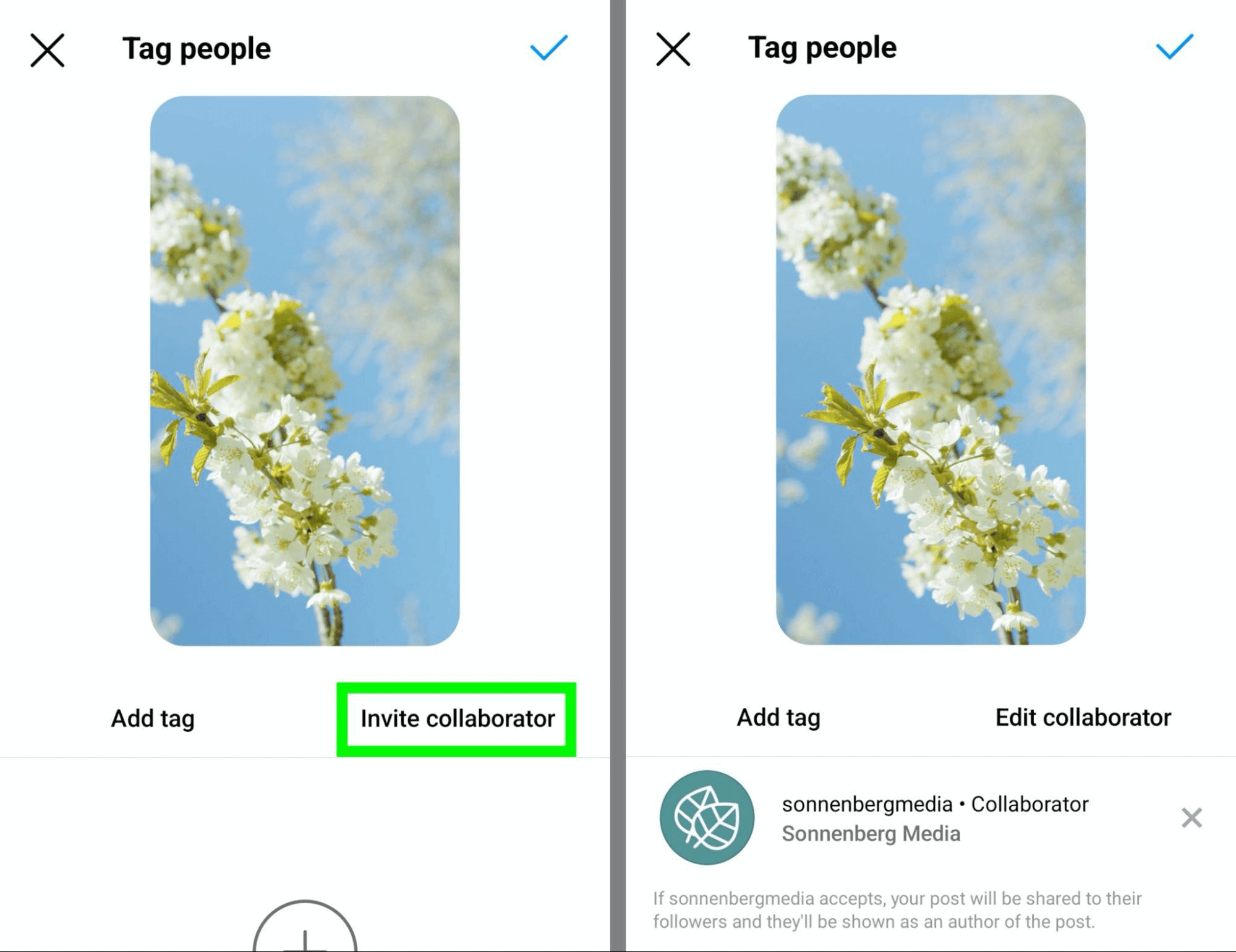
Neglecting to Tag Branded Content
Instagram's sponsored content policies have evolved over the years. In the past, adding a #sponsored hashtag to a post may have been a sufficient disclosure. Now, however, Instagram requires you to be more transparent. If you receive compensation for a post, you have to use the platform's Branded Content tools.
If you neglect to use these tools, your content may be reported or flagged. That can cause your content to be deprioritized, which can limit distribution and impact your partnership.
What to Do Instead
Be as transparent as possible and use the Branded Content tools as required. When you partner with other brands for paid content, ask them to approve your account in advance. In the Instagram app, open your Creator or Business settings. Select Branded Content and tap Request Approval From Brand Partners. Search for the account you're partnering with to start the pre-approval process.
Before publishing a paid post in the Instagram app, tap Advanced Settings. Under Branded Content, turn on the Add Paid Partnership Label option. Then select the right brand partner and proceed to publish. A Paid Partnership label will appear on your post under your username.
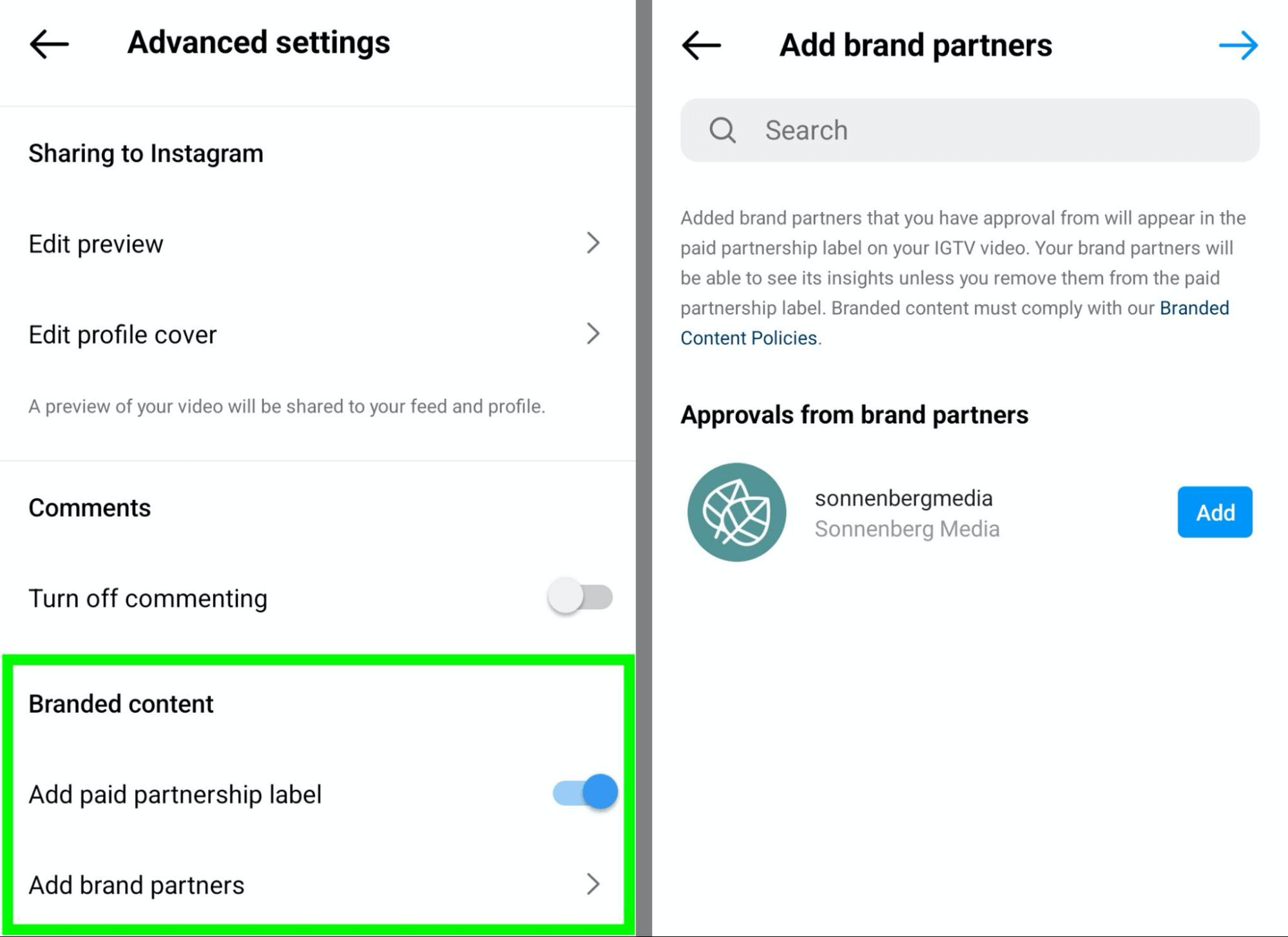
Paying for Likes and Follows
Growing an Instagram account and hitting your goals every month isn't an easy process. Sometimes you might feel like you've already exhausted all of the typical organic tactics without making any progress. In that case, you might consider using non-standard methods for increasing followers and engagement.
Yet it's important to note that Instagram prohibits tactics like paying for engagement or followers. If you use a service to get likes or followers, Instagram may restrict your content or your account.
What to Do Instead
Avoid paying for likes or using engagement pods. Instead, focus on getting genuine engagement and building real relationships. Set aside a few minutes every day to scroll through your feed and comment on content that aligns with your business goals and mission.
Acting Like a Bot
Using an actual bot isn't the only way to activate Instagram's bot signal. If you interact with content or perform actions in the app too rapidly, Instagram may think you're a bot. As a result, your account can get flagged and the app may prevent you from doing anything at all for hours or days.
What to Do Instead
Use Instagram at a normal human pace. Set aside enough time to scroll through your company's page and read captions or watch reels before liking them. Then leave original comments one at a time, without copying and pasting.
To avoid getting flagged for posting content too quickly, consider scheduling posts in advance. Although the Instagram app still doesn't have this functionality, you can schedule posts and stories in Business Suite. On the preview screen, tap Schedule for Later and select the time when you want to publish.
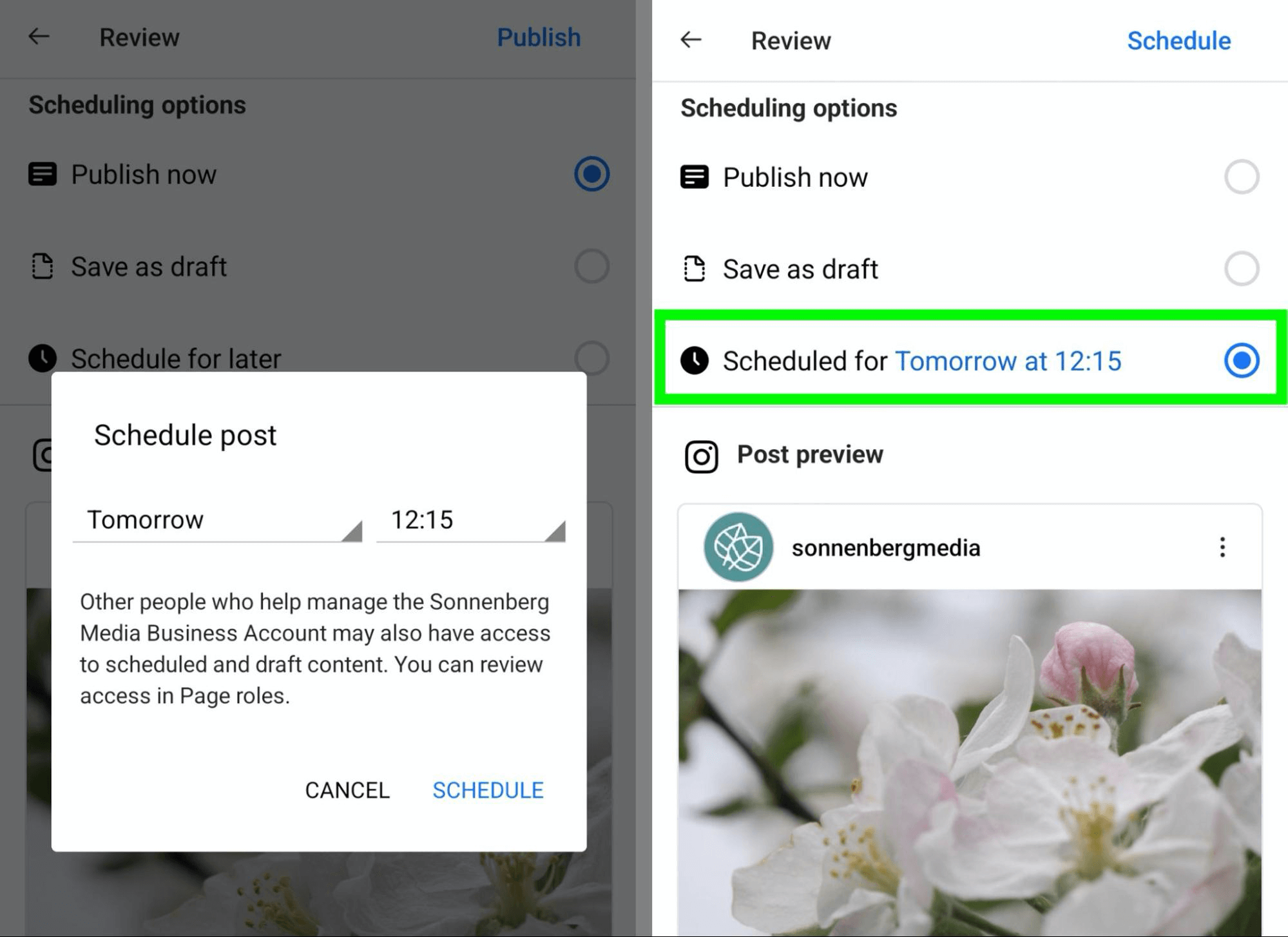
Relying on Unapproved Third-Party Apps
When you want to streamline your social media workflow, you can choose from dozens of apps that integrate with Instagram. But that doesn't mean you should use just any app. Those that use your account to follow and unfollow accounts or perform any other bot-like activity could get your account restricted.
What to Do Instead
If you want to use a third-party app for social media management, check its credentials first. Apps that are official Instagram Partners have completed the platform's approval process and are considered trustworthy. For example, most major social media scheduling tools are Instagram Partners. Apps that aren't part of the program are probably best avoided.
Alternatively, you can use Meta apps that work directly with Instagram. For example, you can use Business Suite to schedule posts and respond to engagement. You can also use Creator Studio to review insights and find the best times to publish content for your audience.
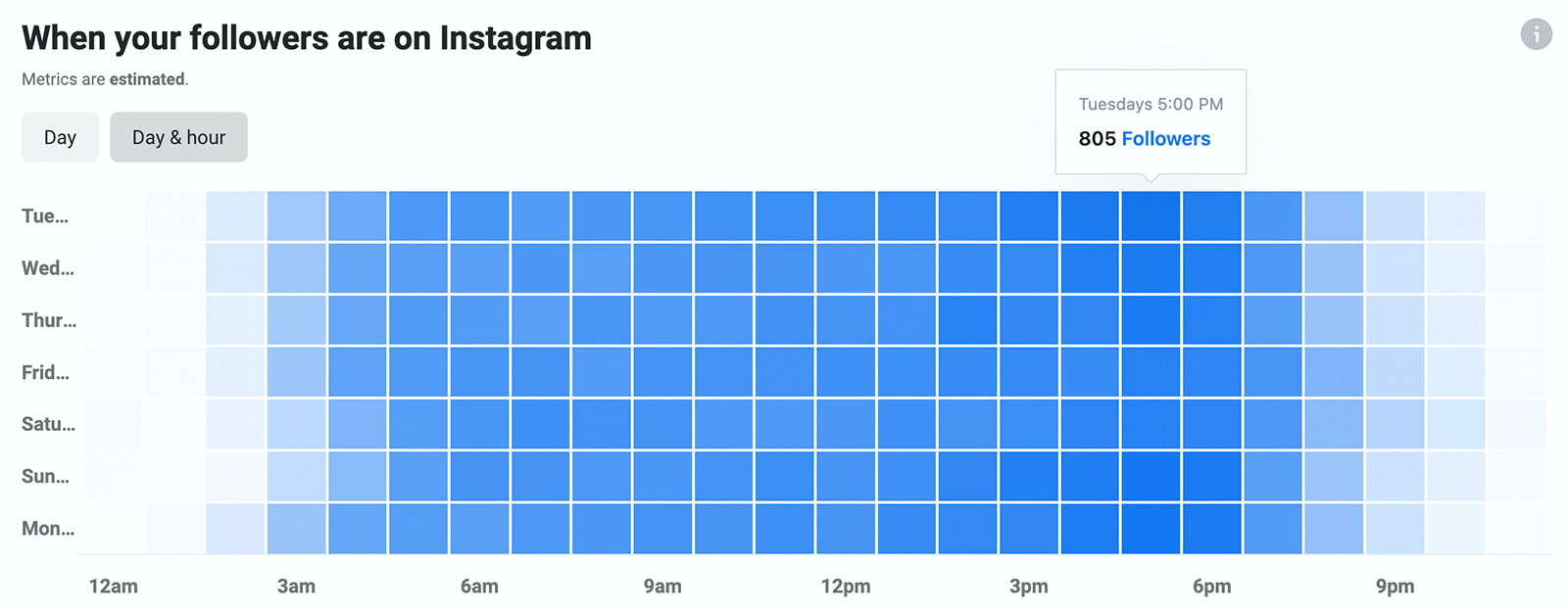
Conclusion
Whether you call it shadowbanning or something else, going against Instagram terms and guidelines can lead to account restrictions. Use the tips above to create a strategy that follows Instagram's best practices so you can maximize reach and engagement.
Get More Advice on Instagram Marketing
- Build an Instagram content strategy that lasts.
- Attract more leads with 11 Instagram video ideas.
- Grow your audience and sales with 14 Instagram post ideas.
Stay Up-to-Date: Get New Marketing Articles Delivered to You!
Don't miss out on upcoming social media marketing insights and strategies! Sign up to receive notifications when we publish new articles on Social Media Examiner. Our expertly crafted content will help you stay ahead of the curve and drive results for your business. Click the link below to sign up now and receive our annual report!
Attention Agency Owners, Brand Marketers, and Consultants

Introducing the Marketing Agency Show–our newest podcast designed to explore the struggles of agency marketers.
Join show host and agency owner, Brooke Sellas, as she interviews agency marketers and digs deep into their biggest challenges. Explore topics like navigating rough economic times, leveraging AI, service diversification, client acquisition, and much more.
Just pull up your favorite podcast app, search for Marketing Agency Show and start listening. Or click the button below for more information.

